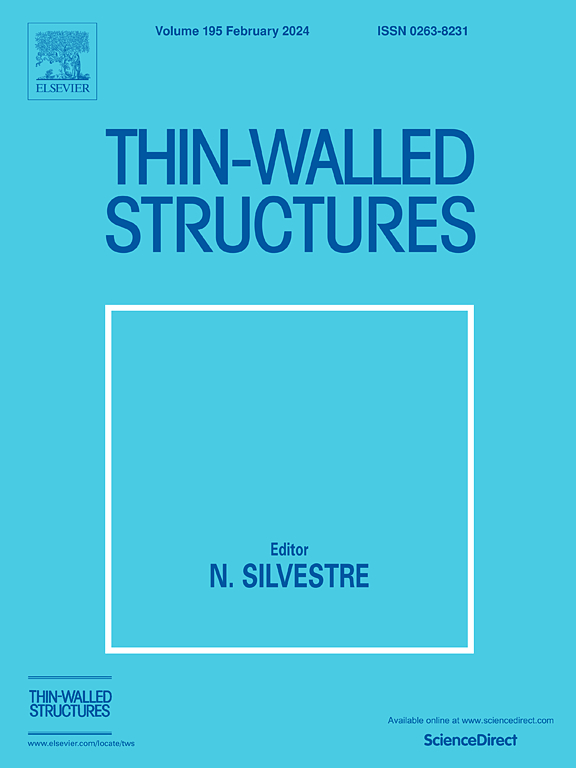Smeared fixed crack model for quasi-static and dynamic biaxial flexural response analysis of aluminosilicate glass plates
IF 5.7
1区 工程技术
Q1 ENGINEERING, CIVIL
引用次数: 0
Abstract
Glass materials are extensively used in load-bearing structures and impact-resistant components because of their distinctive physical and chemical properties. Accurate predictions and assessment of the mechanical responses of glass structures are crucial for structural design and reliability analysis. In this study, quasi-static and dynamic ball-on-ring (BOR) biaxial flexural tests are conducted on aluminosilicate glass. The smeared fixed crack model is calibrated for deformation and failure analyses. First, the model parameters are calibrated carefully, particularly for different failure criteria. Both the deformation field and fracture modes agree well with the experimental observations during the quasi-static tests. For the low-velocity impact biaxial flexural loading condition, three different numerical techniques, namely the initial scaling tensile strength criterion, non-local approach with energy criterion, and rate-dependent failure stress criterion, are implemented in the numerical models for dynamic failure analysis. Finally, the proposed smeared fixed crack model is compared with the widely used Johnson Holmquist Ⅱ (JH-2) model and demonstrates advantages for low-velocity impact response analysis of glass structures.
用于铝硅酸盐玻璃板准静态和动态双轴挠曲响应分析的散点固定裂纹模型
玻璃材料因其独特的物理和化学特性而被广泛应用于承重结构和抗冲击部件中。准确预测和评估玻璃结构的机械响应对于结构设计和可靠性分析至关重要。本研究对硅酸铝玻璃进行了准静态和动态环上球(BOR)双轴挠曲试验。校准了用于变形和失效分析的模糊固定裂纹模型。首先,对模型参数进行了仔细校准,特别是针对不同的破坏标准。变形场和断裂模式都与准静态试验中的实验观测结果十分吻合。对于低速冲击双轴挠曲加载条件,在动态失效分析的数值模型中采用了三种不同的数值技术,即初始比例拉伸强度准则、非局部方法与能量准则以及速率相关失效应力准则。最后,将所提出的涂抹固定裂纹模型与广泛使用的 Johnson Holmquist Ⅱ (JH-2) 模型进行了比较,结果表明了该模型在玻璃结构低速冲击响应分析中的优势。
本文章由计算机程序翻译,如有差异,请以英文原文为准。
求助全文
约1分钟内获得全文
求助全文
来源期刊

Thin-Walled Structures
工程技术-工程:土木
CiteScore
9.60
自引率
20.30%
发文量
801
审稿时长
66 days
期刊介绍:
Thin-walled structures comprises an important and growing proportion of engineering construction with areas of application becoming increasingly diverse, ranging from aircraft, bridges, ships and oil rigs to storage vessels, industrial buildings and warehouses.
Many factors, including cost and weight economy, new materials and processes and the growth of powerful methods of analysis have contributed to this growth, and led to the need for a journal which concentrates specifically on structures in which problems arise due to the thinness of the walls. This field includes cold– formed sections, plate and shell structures, reinforced plastics structures and aluminium structures, and is of importance in many branches of engineering.
The primary criterion for consideration of papers in Thin–Walled Structures is that they must be concerned with thin–walled structures or the basic problems inherent in thin–walled structures. Provided this criterion is satisfied no restriction is placed on the type of construction, material or field of application. Papers on theory, experiment, design, etc., are published and it is expected that many papers will contain aspects of all three.
 求助内容:
求助内容: 应助结果提醒方式:
应助结果提醒方式:


